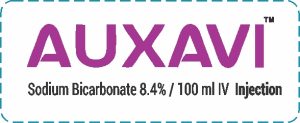Global Guidelines on Teicoplanin: When Is It Recommended?
Teicoplanin guidelines are crucial when you face resistant Gram-positive infections. Have you ever felt that you were not alone when considering whether this antibiotic is suitable for your patient or even for yourself? We understand that making the right decision about antibiotic use can be challenging, and antibiotics are present in many aspects of life. This is what we aim to simplify here at Aarokiyam.
Understanding Teicoplanin
“Why think about teicoplanin instead of other antibiotics?” you may question. A glycopeptide antibiotic called tecoplanin works well against obstinate Gram-positive bacteria. Its use becomes important when infections are resistant or when you or your patient cannot tolerate vancomycin. The drug offers a safer profile for the kidneys, which is often a concern with long-term antibiotic therapy.
Who benefits most?
- Patients with MRSA infections.
- Individuals allergic to vancomycin.
These are cases where infections are deep-seated or severe.
Why choose it?
- Less nephrotoxicity than vancomycin.
- Can be used with targeted dosing.
- Offers flexibility for outpatient therapy.
Global Guidelines & Recommendations
You may wonder what international authorities say about teicoplanin. Although the WHO offers general recommendations for the use of antibiotics, many clinical organisations provide particular teicoplanin guidelines:
- The highlights of clinical guidelines:
- Pay close attention to dosage and observation.
- MRSA and other resistant infections are indicated.
- Adjustments for renal or liver impairment.
Regional differences matter:
- Japanese and UK societies emphasize therapeutic drug monitoring (TDM).
- European recommendations emphasise difficult infection dosage.
- Patterns of local resistance should inform or guide your choice.
At Aarokiyam, we encourage you to always check both international and local guidance before starting treatment.
When Is Teicoplanin Recommended?
You might ask yourself, “Is it always the first choice?” Not necessarily. Consider teicoplanin when:
- Gram-positive organisms show resistance.
- Vancomycin is not tolerated.
- Infections are severe, deep-seated, or complicated.
- You can perform therapeutic drug monitoring.
This ensures you give effective therapy without unnecessary risks.
Dosing Strategies You Can Follow
hours for three doses.
Maintenance Dose:
6 mg/kg daily, adjusted for kidney function.
Renal Impairment:
Reduce frequency based on creatinine clearance.
Outpatient Therapy:
Thrice-weekly dosing can be done safely with proper monitoring.
By following these strategies, you help ensure your patients’ safety and treatment effectiveness.
Therapeutic Drug Monitoring (TDM)
You might wonder why monitoring is important. Teicoplanin has a long half-life and variable absorption. Monitoring helps you:
- Achieve target trough levels.
We know you need practical guidance you can rely on. Here’s a clear plan:
Loading Dose:
12 mg/kg every 12
- Avoid toxicity in sensitive patients.
- Adjust doses based on infection severity.
Therapeutic Drug Monitoring (TDM)
You might wonder why monitoring is important. Teicoplanin has a long half-life and variable absorption. Monitoring helps you:
- Achieve target trough levels.
We know you need practical guidance you can rely on. Here’s a clear plan:
Loading Dose:
12 mg/kg every 12
- Avoid toxicity in sensitive patients.
- Adjust doses based on infection severity.Therapeutic Drug Monitoring (TDM)
You might wonder why monitoring is important. Teicoplanin has a long half-life and variable absorption. Monitoring helps you:
- Achieve target trough levels.
We know you need practical guidance you can rely on. Here’s a clear plan:
Loading Dose:
12 mg/kg every 12
- Avoid toxicity in sensitive patients.
- Adjust doses based on infection severity.
Safety and Side Effects
We know safety is always on your mind. You might worry about kidney problems or allergic reactions. Common side effects include:
- Nephrotoxicity.
- Hematologic abnormalities.
- Hypersensitivity reactions.
Monitoring tips:
- Perform regular renal and liver function tests.
- Obtain complete blood counts during prolonged therapy.
If adverse effects appear, adjust dosing or consult a specialist. Your vigilance matters in keeping treatment safe.
Practical Considerations for You
Sometimes guidelines sound perfect in theory, but tricky in real life. Here’s what you need to know:
Availability: Teicoplanin may not be available in all hospitals.
Cost: It might be pricier than alternatives.
Resistance: Local bacterial patterns should inform your choice.
At Aarokiyam, we emphasize balancing guidelines with real-world conditions to achieve optimal care.
FAQs You Might Have
For serious resistant Gram-positive infections.
Yes, monitoring ensures proper dosing and safety.
Lower the dose frequency and watch creatinine levels.
Nephrotoxicity, hematologic changes, or allergic reactions.
Yes, with proper monitoring and dosage adjustments.
Conclusion
Now you understand when teicoplanin should be recommended, how to dose it safely, and why monitoring is essential for effective treatment. By following the correct teicoplanin guidelines, you can easily protect your patients from risks and ensure better outcomes.
At Arokiam, we believe in combining global guidelines with your local reality. Because antibiotic use can never be one size fits all. When you responsibly apply these insights to your treatment, teicoplanin becomes more than just an antibiotic. It becomes a trusted tool to save patients’ lives and prevent resistance.

